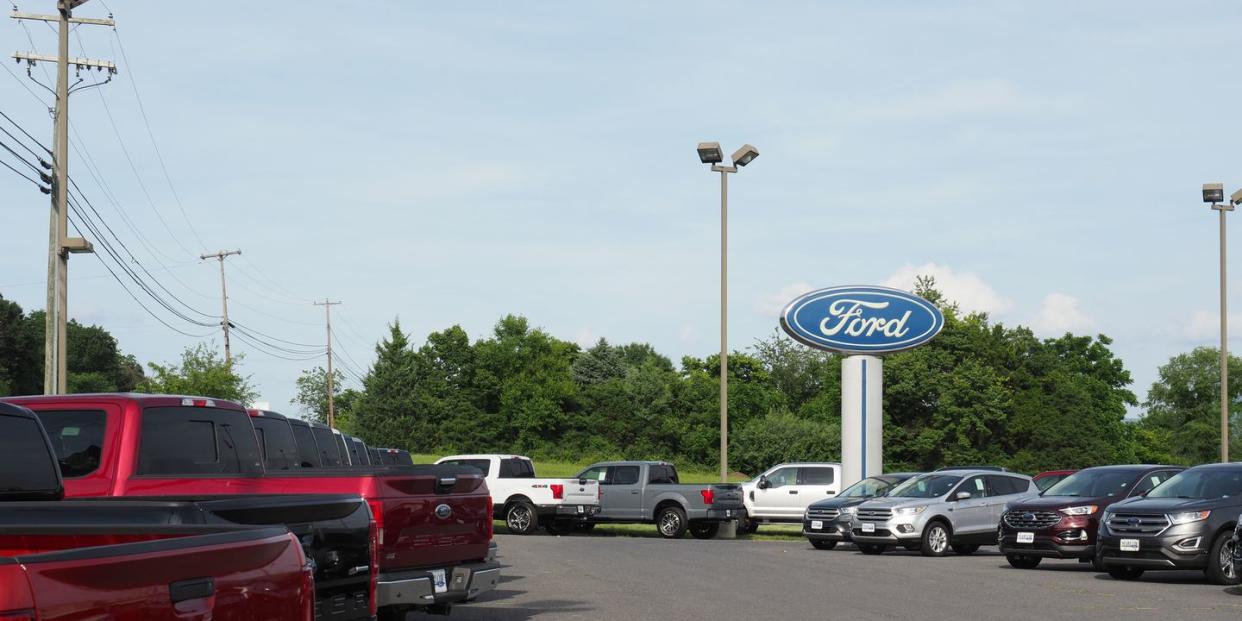Fewer Cars on Dealer Lots Is a 2020 Thing That May Endure beyond the Year

The coronavirus pandemic has put a kink in automakers' production plans, but that didn't stop people from wanting to buy cars.
You can probably see where this is going, but limited supply and strong demand mean automakers and dealers have been able to charge more for cars than when there was a glut on the market.
During the last big economic downturn, choices for shoppers in big-box stores took a hit. Will the same happen on dealer lots for the next few years?
Famously, in the early years of the automobile, you could buy a car in any color you wanted as long as it was black. Later, white and silver were offered, then reds and greens and a whole slew of other options. Car companies started to go to great lengths to come up with slightly different color shades and give them absurdly complicated names, and they were all on display at your local dealership, polished and shiny and bright.
The silly names are here to stay, but a rainbow of new models lined up in the sun might soon be a thing of the past. As part of the economic craziness of 2020, car dealerships have made do with fewer cars on their lots, with automaker supply chains and production facilities all affected. The Wall Street Journal reports that there were almost a million fewer cars at U.S. dealers in October, a drop of 25 percent compared to October 2019.
Despite the pandemic's tightened supply, demand for new vehicles has remained high, with new vehicles spending around 56 days at a dealership in October, a reduction of 27 percent compared to a year earlier. All of this buying of a limited supply has unsurprisingly meant more profits for sellers.
Trend Not Limited to Car Dealers
Also, instead of being able to find the exact vehicle you want among the dealer's stock, more car buyers are ordering the exact vehicle and trim (and, yes, color) that they want from the automaker and then just waiting for it to arrive. Nothing about that chain of events says "dealer incentives," which means higher prices for the car you want. And this reality might be with us for a while, now that customers have adapted and the companies realize they can make more money this way. The Journal says it could become "a monumental shift in the way cars are sold in the U.S."
The trend can be found in places other than automotive dealerships. In a separate article, the paper notes that all kinds of retailers—fashion, housewares, food—are limiting the number of options available on store shelves. The gist is that too many choices are "overwhelming shoppers and clogging supply chains." These limitations stem from different reasons than with cars, but people are still buying whatever is available, whether it's an SUV or shampoo.
One study cited by the Journal found that limiting the possible amount of choices can actually increase purchases. In one grocery store in the study, only 3 percent of shoppers who could choose among two dozen kinds of jams actually purchased a jar, but when there were just six kinds available, almost 30 percent bought one.
Adjusting inventory to increase sales is not exactly a new idea in retail quarters, especially during uncertain economic times. In 2009, the National Public Radio (NPR) Planet Money podcast did an episode about how some large stores, like Walmart and Rite Aid, "will be cutting the assortment of products in their stores by at least 15 percent." The Journal reported on this back in 2009, too, saying that "some 47,113 new products, variations or sizes [of consumer packaged goods] were launched [in 2009], more than twice as many as in 1998." Companies thought more choices were good, but when the economy tightened a decade ago, the big retailers discovered that people didn't want a wide variety of choices. They wanted to get in and get out.
Looks like that same thinking has finally hit dealer row.
You Might Also Like

 Yahoo Movies
Yahoo Movies 
